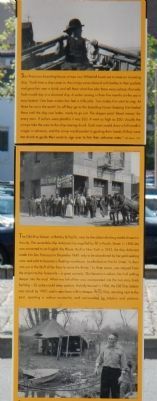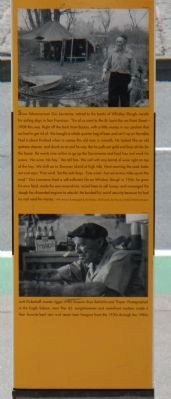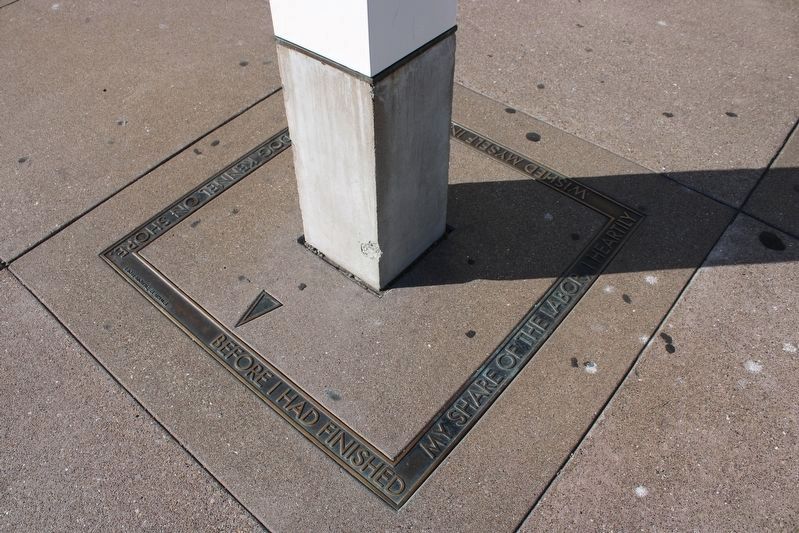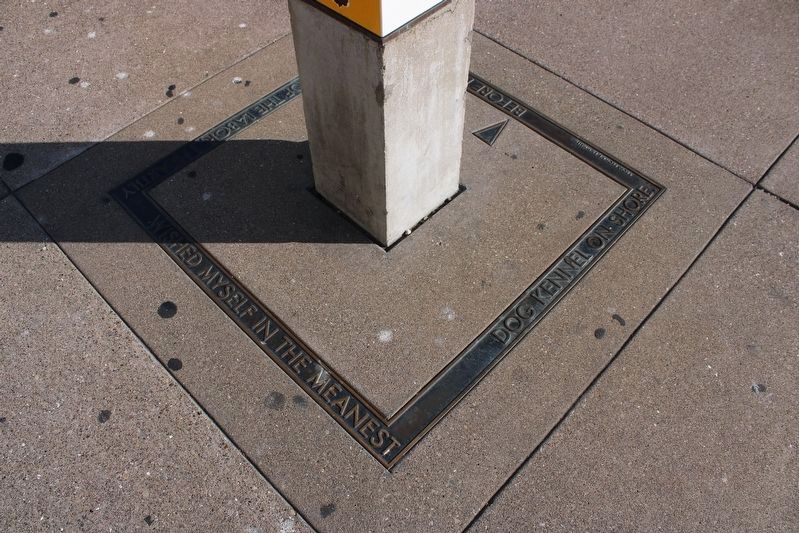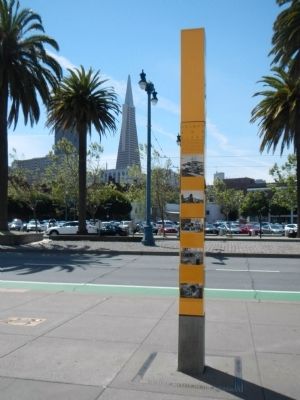Northern Waterfront in San Francisco City and County, California — The American West (Pacific Coastal)
Crimps and Dives
San Francisco was notorious the world over for waterfront dives with their boarding-house crimps who cajoled incoming sailors made too drunk to think. They coerced seamen into handing over their pay for board in San Francisco, only to deliver them to ships making such long and dangerous voyages that no sober crew would be willing to sign on. The skipper paid “blood money” - $25 to $50 for each man delivered. “In three years, the crimp Larry cleaned up $80.000 Shanghaiing sailors. We last I heard of him, he was in a penitentiary. I hope the louse died there.” – Bill Adams, Ships & Memories, 1935
Photograph 1
The 1863 photograph above shows the Vallejo and Broadway wharves with a shabby huddle of waterfront dives built on pilings over the water. From where you stand, the view is directly ahead on your left. The ship chandlery stood on Vallejo, and the three-story waterfront hotel could be found next door at #9 Vallejo, with a bar run by Clavadetscher and Bodger. “Steamboat” Cowan ran a restaurant in this complex; so did William Cummings, who also owned the Queen City Hotel, on block eat. Paul’s Restaurant faced Davis Street, with a separate “Family Entrance”; advertised “Oysters Any Style”’ and a sign read, “Crews of Vessels Boarded Upstairs.” Nine saloons could be found in this wharf compound – some with rooms for rent above, and washing strung out behind. All in all, in 1863 a sailor only had to step off his ship and within less than 200 feet he could spend all of his pay and say “I’ve Seen San Francisco!”
Photograph 2
San Francisco boarding-house crimps row Whitehall boats out to meet an incoming ship. “Each time a ship came in, the crimps came aboard with bottles in their pockets and gave her men a drink; and tell them what fine jobs there were ashore; than only a fool would stay in a damned ship. A sailor coming in from five months on the sea is easy keeled. One beer makes him feel a trifle jolly. Two makes him start to sing. At three he owns the earth! So off they go to the boarding-house; keeping him keeled there until the ship was laden, ready to go out. The skipper paid “blood money” for every man. If sailors were plentiful it was $25. It went as high as $50. Usually the crimps take the crew to the ship roaring drunk. Each man would draw a full month’s wages in advance, and the crip would pocket it, guiding their hands (if they were too drunk to guide their own) to sign over to him their advance notes.” – Bill Adams, 1935
Photograph 3
The Old Ship Saloon, on Battery & Pacific, may be the oldest drinking establishment in the city. The venerable ship Arkansas lay engulfed by fill in Pacific Street. In 1850 she was converted to and English Ale House. Built in New York in 1833, the ship Arkansas made it to San Francisco in December 1849, only to be abandoned by her gold seeking crew and sold to become a floating warehouse. Landlocked on Pacific Street, “a door was cut in the bluff of her bow to serve the thirsty.” In three paces, you stepped from the street into the forecastle – a great curiosity. She became a saloon, he hull settling deeper into the mud. What was left of her was incorporated into the two-story brick building – 22 sailors could sleep upstairs. Partially burned in 1906, the Old Ship Saloon was rebuilt by 1907; and is seen here with innkeeper Henry Klee, standing next to the post, sporting a walrus mustache, and surrounded by helpers and patrons.
Photograph 4
Scow Schoonerman Gus Lawrence, retired to the banks of Whiskey Slough, recalls his sailing days in San Francisco. “Six of us went to the St. Louis Bar on Front Street – 1908 this was. Right off the bark from Boston, with a little money in our pockets that we had to get rid of. We bought a whole quarter keg of beer and set it up on the table. Had it about finished when in comes this old man in overalls. He looked like an old spittoon cleaner, and drunk as an owl he was. But he pulls out gold and buys drinks for the house. He wants nine sailors to go up the Sacramento and load hay and work his scows. ‘No wine, No hay.’ We tell him. We sail with one barrel of wine right on top of the hay. We drift on to Sherman Island at high tide. Next morning the cook looks out and says, ‘Fine wind, Set the sail boys.’ Fine wind – but we’re two miles up on the mud.” Gus Lawrence live a self-sufficient life on Whiskey Slough in 1956: he grew his own food; made his own moonshine’ raised bees to sell honey; and scrounged the slough for discarded engines to rebuild. He banked his social security because he had no real need for money. 1956 interview & photograph by Karl Kortum, Chief Curator, San Francisco National Maritime Museum.
Photograph 5
Jack Dickerhoff, master rigger of the museum ships Balclutha and Thayer. Photographed in the Eagle Saloon, near Pier 43. Longshoremen and waterfront workers made it their favorite beef stew and steam beer hangout form the 1930s through the 1960s.
Embedded around the base
Erected by San Francisco Art Commission for the Waterfront Transportation Projects.
Topics. This historical marker is listed in these
topic lists: Industry & Commerce • Waterways & Vessels. A significant historical month for this entry is December 1849.
Location. 37° 47.992′ N, 122° 23.877′ W. Marker is in San Francisco, California, in San Francisco City and County. It is in Northern Waterfront. Marker is on The Embarcadero, on the right when traveling north. Touch for map. Marker is in this post office area: San Francisco CA 94111, United States of America. Touch for directions.
Other nearby markers. At least 8 other markers are within walking distance of this marker. Kanrin Maru (here, next to this marker); Braving the Seas (a few steps from this marker); Vallejo Street (within shouting distance of this marker); Building the Seawall (within shouting distance of this marker); Telegraph Hill (within shouting distance of this marker); Russian Navy Heroes (about 300 feet away, measured in a direct line); Pony Express Wharf (about 400 feet away); A Sailor’s Life is a Dangerous One (about 400 feet away). Touch for a list and map of all markers in San Francisco.
More about this marker. This marker is located in front of Pier 9.
Credits. This page was last revised on February 7, 2023. It was originally submitted on May 6, 2014, by Barry Swackhamer of Brentwood, California. This page has been viewed 723 times since then and 20 times this year. Last updated on June 22, 2022, by Joseph Alvarado of Livermore, California. Photos: 1, 2, 3. submitted on May 6, 2014, by Barry Swackhamer of Brentwood, California. 4, 5. submitted on June 26, 2022, by Joseph Alvarado of Livermore, California. 6. submitted on May 6, 2014, by Barry Swackhamer of Brentwood, California. • Syd Whittle was the editor who published this page.

